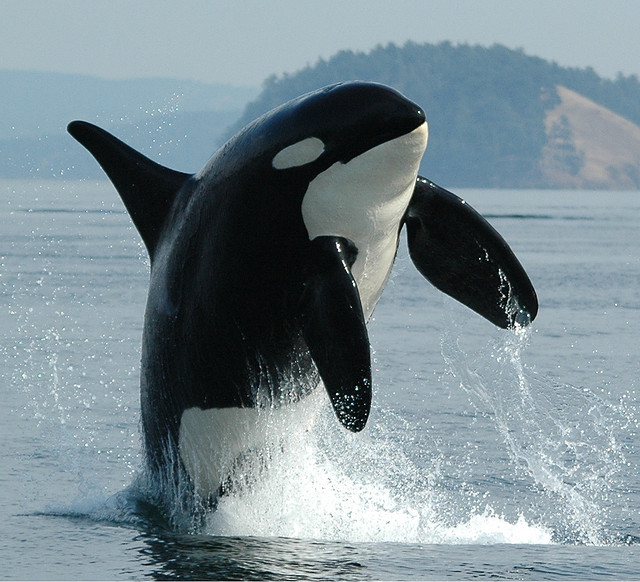Members of the Dolphin family, Orcas (also known as Killer Whales) can measure nearly ten meters in length and weigh up to six tons. These apex predators can consume up to 500 lbs. of food every day! They use echolocation to hunt, emitting a series of clicks and whistles to determine the size, shape, speed, distance and direction of their prey.
Females can live to see their hundredth birthdays. The reason they can live this long comes as a shock, though: it’s because they have the chance to “offload” accumulated toxins into their babies, thereby restoring their own health. It’s an incredible statement about the condition of our Oceans.
The implications of this toxin offloading are even more sobering: Orca calves are born already carrying a huge amount of human-generated toxins. These toxins (such as paints, adhesives, fire retardants and preservatives) build up in the whales’ bodies over the years. After birth females continue to feed their calves “toxic milk” giving their young a 50/50 chance of life in the first year but extending their own life considerably. As the males of the species have no such opportunity to dump toxins, their life expectancy is ~ 40 years.
Our pacific waters surrounding Victoria and Vancouver Island make for spectacular whale sightings! Bigg’s Killer Whales are mammal hunting Orcas and they tend to be low-key and quiet, preferring to travel alone or in small groups as they go about their business of hunting seals, sea lions and other marine mammals.
Orcas are very acrobatic and can sometimes be seen leaping right out of the water. (They are Dolphins, after all!) This is called breaching. Watch for spy-hopping, too: that’s when they get curious enough about what’s happening above surface around them to “tread water” for a little while so they can check things out.
